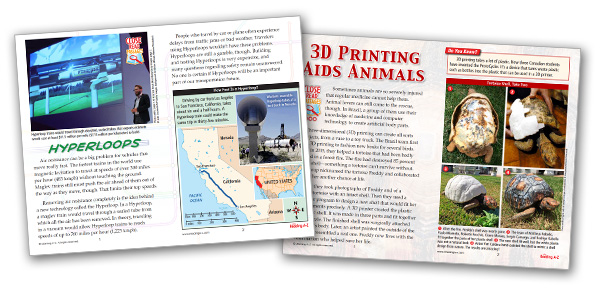When teachers begin to explore close reading as a resource for their intermediate classrooms, they often end up with as many questions as answers. The term inspires many interpretations and many ideas about instructing intermediate students in using close reading as a skill.
To take some of the mystery out of this valuable activity, Raz-Plus includes short, complex Close Read Passages in both fiction and nonfiction, meeting a range of needs for students in grades 2–6. These passages, along with meaningful teacher support and easy-to-use student materials, incorporate text analysis and annotation into your classroom. Helpful resources remove the fear and difficulty intermediate students often associate with trying to figure out the how and why of close reading.
What is Close Reading?
Close reading involves slow, purposeful text readings, with the end goal of deepening meaning and improving understanding. This type of analytical work, which strengthens a student’s ability to comprehend text, involves repeated readings of a text through a variety of lenses, helping the reader see the author’s intention and employ critical thinking.

When working through our Close Read Passages, students engage in a ritual of reading and re-reading the text three times, focusing each read on a different purpose, such as a review of structure or word choice. Each Close Read Passage is accompanied by a variety of guiding questions and notes to support each step in the close read process, offering a thorough analysis of the text.
By consistently using these passages and accompanying instructional materials, teachers create close reading rituals that give students an authentic experience with the process. Enough exposure to the ritual will lead to an internalization of the skill, allowing students to utilize the same approach with any text.
Implementing Close Read Passages in Your Classroom
To implement Close Read Passages with your intermediate students, utilize the following steps:
- Before reading the Close Read Passage, begin by asking, “What is this text about?” This simple question requires the reader to think about the main idea and details of the text, using information from the text to support their initial understanding.
- Next, ask students to read the text a second time for a closer look, focusing on how the author wrote the text. Reading the passage a second time through this lens teaches students to analyze the text for structure.
Expand this idea by asking, “How does the structure support the meaning of the text?” This question empowers students to think about authors as people who make organizational decisions to convey a message, thus bridging the gap in the classroom between reading and writing.
- Finally, have students read a third time. To guide their thinking, you might ask: “What does this text make me learn about the topic and life?” Considering the text from the perspective of what the author wanted you to learn is a way to unlock new ideas. Students use information from the text to support their own ideas about life, make personal connections, and infer a deeper understanding.
Alternatively, you may choose to focus on word choice or tone. You might examine some of the words the author uses in a text and ask, “Why does the author choose these words?” or “What is the author trying to convey?”
Since students can only infer the author’s intention, this part of close reading opens up great discussion and dialogue, and teaches students to use textual evidence to support their thinking and ideas. The enriching dialogue will build a deeper understanding of the text and help students listen to other people’s ideas about the text.
Throughout all three reads, model for students how to annotate text, using the provided Note-Taking Guide. This activity helps students understand that annotating a text helps them think more clearly about what they are reading. Students use the annotation symbols as guides towards important points in the reading that ultimately serve as text evidence.
Extending Close Reading for Your Students
You can use the passages to extend close reading instruction for your students in a variety of ways:
- To further support students’ growth in close reading and text analysis, you can utilize the optional writing activity to expand on the personal connections discovered in the third step of the process.
- To expand their thinking as students consider the author’s purpose, you can ask them to consider how reading the text made them feel, along with what the author did to create that response, and have them write a piece explaining that connection.
- To see how writers of every genre make choices that are thoughtful and meaningful, apply the strategies learned from the Close Read Passages to a song lyric or a poem and analyze that type of text for meaning and purpose.
- Strengthen student text analysis skills by doing a paired-reading activity, comparing a fiction to a nonfiction Close Read Passage.
- After reading a passage, group students and task each person with creating open-ended questions, rather than questions that can be answered with a simple yes or no. Next have students silently pass the questions around to each other, giving two minutes per question to write a response, and then share.
- Instead of having students read independently, ask your intermediate students to read aloud in pairs, annotating as they go. When finished, have them share something they annotated. This encourages them to stop and think while they are reading.
- Choose a Close Read Passage that deals with a significant event or topic, such as the 5th grade passage The Train Station, and extend the idea into a classroom debate.
Practicing the skill of close reading gives intermediate students strategies they can use on any text they find challenging, thus teaching for independence. When students know and understand how to utilize targeted questions to create meaning from challenging texts, they can approach any text independently—including high-stakes passages—with confidence and competence.


